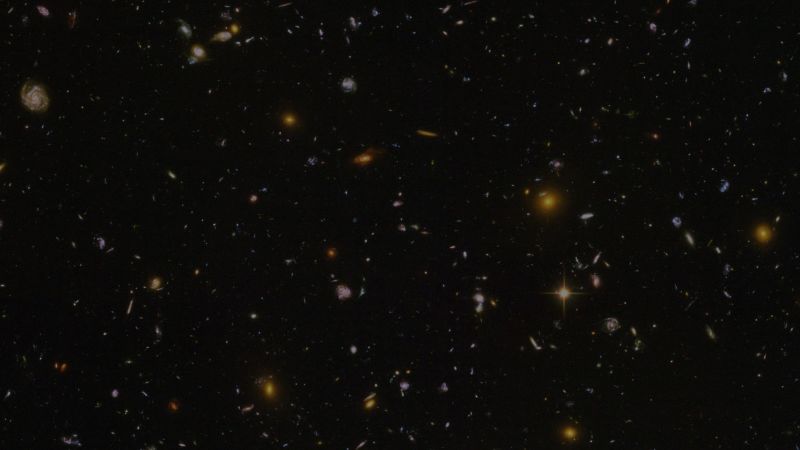
Uranus’ hidden rings and unusual features shine in new Webb image
The James Webb Space Telescope has snapped a glowing new portrait of Uranus that showcases the ice giant’s typically hidden rings, moons, weather and atmosphere — features that were nowhere to be seen in the planet’s first close-up more than three decades ago.
Webb is known for capturing stunning perspectives of distant cosmic objects in great detail, but the space observatory is also capable of revealing new insights in our own celestial backyard.
Humanity’s first good look at Uranus came when Voyager 2 flew by the seventh planet from the sun in 1986. Through the spacecraft’s camera, which viewed the solar system in visible light, Uranus appeared to be a bright blue world.
But Webb, which views the universe through infrared light invisible to the human eye, captured all of the facets often missing in other telescope images, revealing the planet’s dynamic nature.
Sending a dedicated mission to study Uranus has become a priority for astronomers, according to a report released in 2022.
And that means mission planners need as much information about the icy planet as possible — such as this detailed Webb image — before sending a spacecraft to investigate. Released by NASA on Monday, the image includes more detail than a previous version released in April.
The normally faint inner and outer rings of Uranus shine in the latest image, including the planet’s closest yet incredibly dim and diffuse Zeta ring. Nine of Uranus’ 27 known moons can also be seen as blue dots, including some of the smaller ones that exist within the rings.
The “literary moons,” named for Shakespearean characters, include Rosalind, Puck, Belinda, Desdemona, Cressida, Bianca, Portia, Juliet and Perdita.
Uranus’ unusual seasons
One of the brightest features in the new image is Uranus’ seasonal white north polar cap, which takes center stage as the pole points toward the sun during the planet’s approach to solstice, expected to occur in 2028.
Uranus is an unusual world that spins on its side with a 98-degree tilt, which means the icy planet experiences seasons in an extreme way.
One year on Uranus lasts around 84 Earth years, and for about a quarter of the Uranian year, the sun shines directly over one of the planet’s poles, which means the other half of Uranus experiences a dark winter that lasts 21 Earth years.
Storms can also be seen near and beneath the polar cap in Uranus’ atmosphere. Astronomers will eagerly watch how the polar cap and the planet’s weather and atmosphere change as Uranus approaches solstice. Scientists want to determine what seasonal and meteorological forces influence the storms, which could also reveal insights into Uranus’ complex atmosphere.
While a year on Uranus may take decades from our perspective, one day on Uranus passes very quickly, only taking about 17 hours.
The planet’s quick spin makes spotting storms and other atmospheric features on Uranus very difficult because they appear to move within minutes.
But Webb was able to take long and short exposures of Uranus that allowed astronomers to see unprecedented details.
Revisiting the ice giants
Voyager 2 is the only spacecraft that has flown near Uranus and Neptune on the edge of our solar system, which means that many mysteries remain about the ice giants. In recent years, researchers have detected X-rays coming from Uranus.
A team of scientists also found a weird “blip” in Voyager 2 data indicating the spacecraft flew through a plasmoid, a giant magnetic bubble that likely pinched off part of the planet’s atmosphere, sending it out into space.
Understanding more about Uranus can also aid astronomers as they study the thousands of ice giant-size exoplanets discovered outside of our solar system to shed light on how those worlds may have formed.
